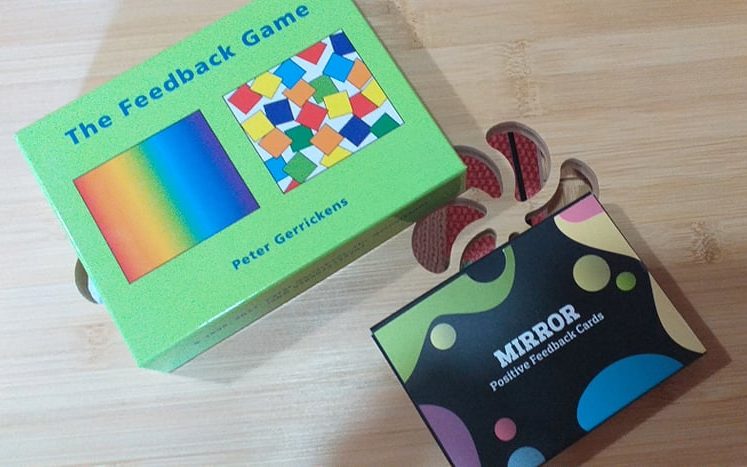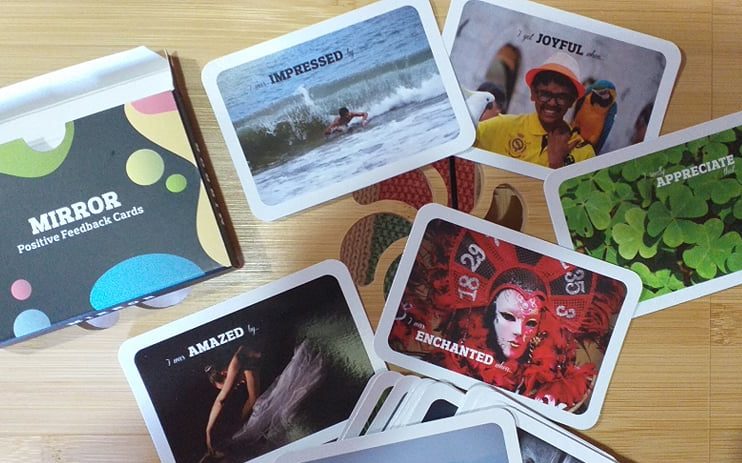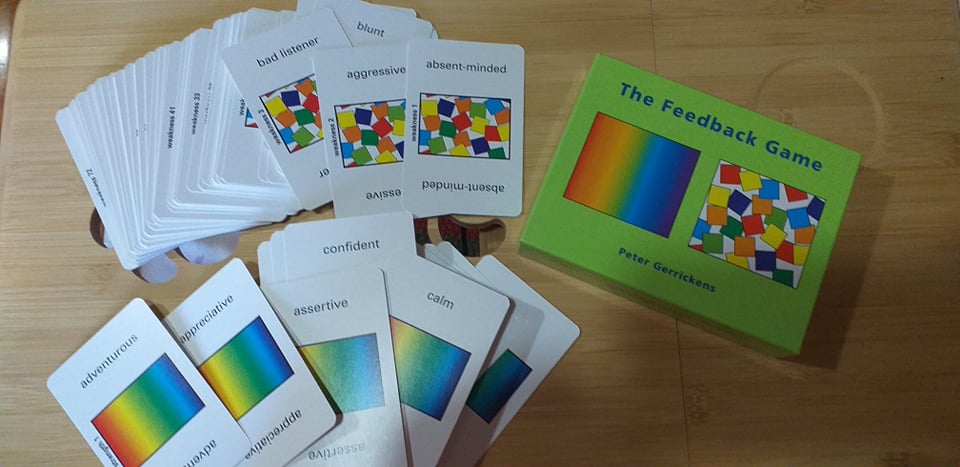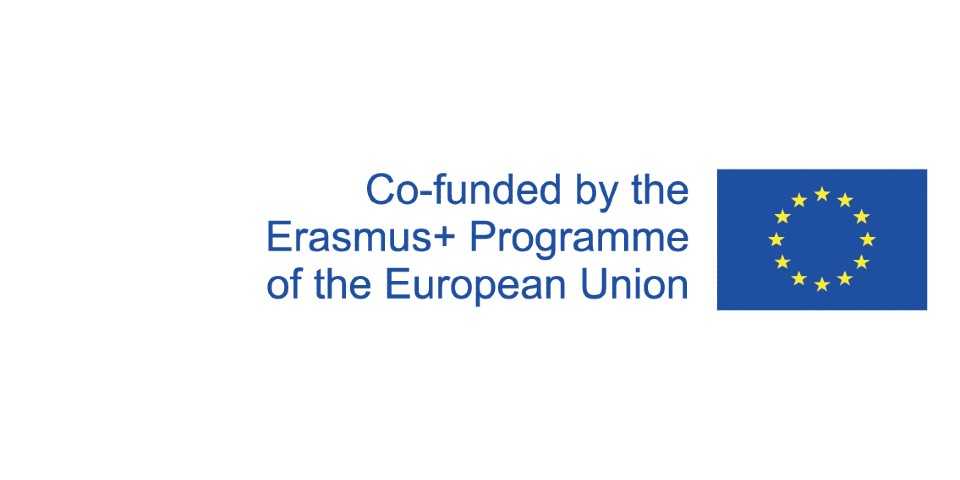What is feedback?
Feedback is helpful and important. Feedback which is continuous, on time and right on point helps us to improve our learning and our work.
Feedback is information provided by a person who could be a friend, a mentor, a teacher, a parent, a colleague or an employer about one’s work, performance or understanding. Feedback is important for learning. Feedback could be in the form of communicating another perspective on ways to improve one’s work, a friend or peer can provide a different way or strategy for completing a task or a teacher could provide a correction and encouragement to improve one’s work.
Feedback is not quantitative (that means it is a mark or a score). Good constructive feedback must be qualitative, (meaning that it is made up of statements or opinions and not numbers) to provide a learning process through communicating, discussing or sharing an evaluation. Qualitative feedback such as comments and advice provide the answer to “what”, “how” and “why” questions behind quantitive feedback.
Feedback can be used to encourage learning, to raise or increase motivation, and to improve performance. Let us see how!
What is the best way to give feedback?
To be effective, feedback must be positive and constructive. The feedback sandwich image represents a good way of giving feedback making sure that positive feedback is given at the start, followed by negative but constructive feedback and finishing off with some more positive feedback. In this way negative feedback is balanced by the positive aspects of one’s performance.

Giving constructive or positive feedback means:
- keeping sentences simple and to the point, focusing on real examples;
- asking for a response;
- leaving the choice of whether to take action or not to the person receiving the feedback;
- using language which can is age-appropriate, sensitive to the other person’s needs, easy to understood and shows respect.
Make sure that feedback is:
- not subjective (personal).
- objective (based on facts or observations and specific).
- in good time meaning that it is given soon after the behaviour/event/work.
- given with respect and without judgement.
- given using an appropriate balance of positive and negative (think of the sandwich).
- given in a way and in amounts that a person can learn.
- continuous to provide encouragement and motivation to improve.
- two-way.
Don’t:
- give feedback by asking someone to guess what you are feeling or thinking.
- make indirect statements using many ifs, ifs and maybes.
- go straight to the solutions or suggestions for improvement.
- talk down or adopt a “telling off” or a patronizing “I know best” attitude.
Here is an example from everyday life to show the sandwich model of giving constructive feedback. 🙂
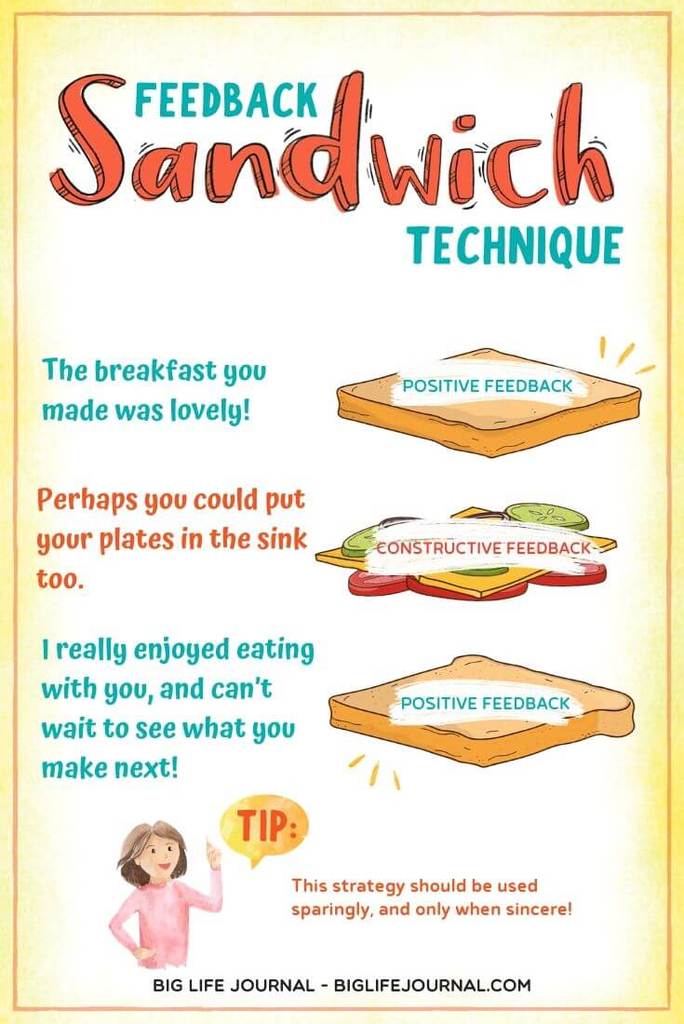
Points to note when receiving feedback
We can become skillful at giving feedback by using the tips above and practicing, but here are some suggestions for you when you are at the receiving end of feedback. 🙂
Make sure that you:
- Listen and focus carefully on what is being said to you.
- Learn to receive feedback.
- Keep an open mind. Try not deny, defend or argue.
- Ask for any clarification.
- Accept praise; it is yours!!
- Do not feel that you have to agree/disagree.
- Make sure that you are understanding the feedback being given.
- Ask how things could have been done differently.
- Ask for more, follow ups and continuous feedback is helpful.
- Are grateful as receiving feedback is a way to learning more! 🙂
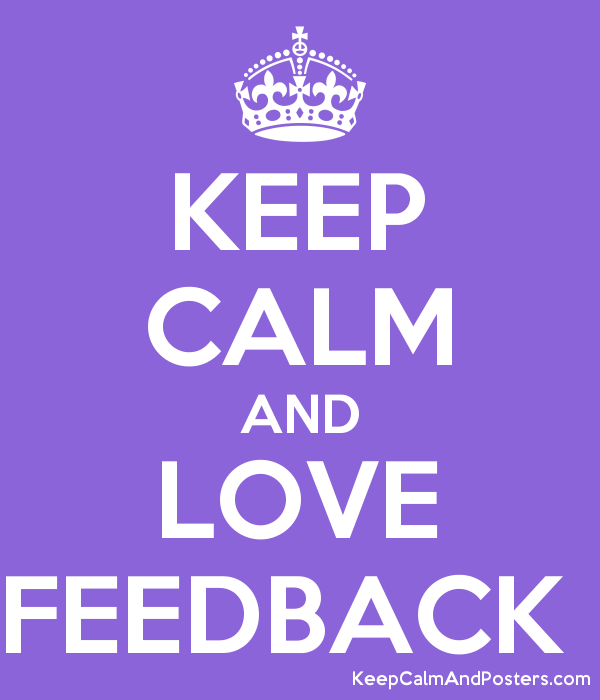
Feedback during Circle Time
We have practiced giving and receiving feedback during our youth meetings. Have a look at our Circle Time , Critical Thinking and P-M-I pages to explore tools and our ways of working with feedback to improve and learn more.
Feedback is important in many other settings. Businesses and managers give and receive feedback as a means to launch or improve products, maintain and improve relationships with employees, supervisors, managers, customers and more!!
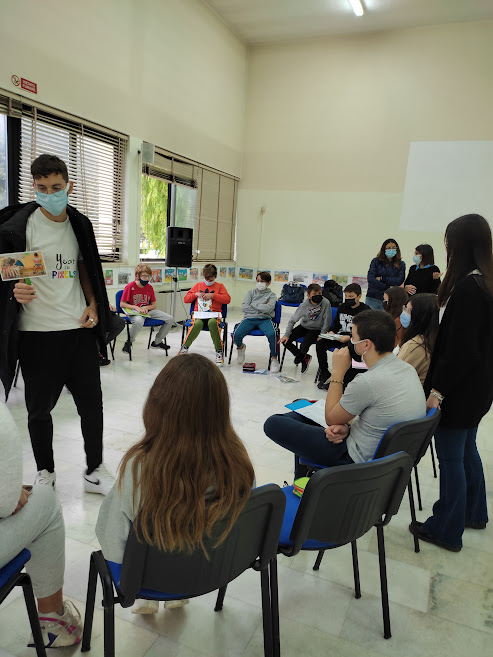
Feedback Games
Playing card games is fun! Learning about which words to use to give feedback or how to form phrases to give feedback is helpful. These are the card games you could use to practice!
